As an Amazon Associate I earn from qualifying purchases. Please read the disclaimer for more info.
The Lellama – the place of bargain
Our trip to the main Negombo fish market had started the previous day. We were trying to book a tuk tuk to pick us up at 4.30am and the driver was telling us that the fish market didn’t open until 8.00am. I didn’t know whether he just didn’t want to get up at that time of day or was confused by where I wanted to go.
I figured it was the latter so instead of talking, I decided it might be easier if I point to the location on the map. As I brought up the area on Google Maps, the word Lellama appeared and once he saw the name a wide grin appeared on his face. He instantly recognised where we wanted to go and was keen to take us.
We would later discover that in his younger and fitter days he used to work on the large fishing boats that dock at the Lellama, where the larger fish are processed, and hadn’t visited the market at this hour in a long time. This proved a real bonus for us as he was able to show us around and provide a little background on what we were seeing.
And he was able to catch up with some of his old friends as well, which was pretty nice to see.
Negombo Fish Market – The Lellama
Negombo has a large fishing industry and hundreds, if not thousands, of boats of all sizes leave the shores each day to fish in the Laccadive Sea or further afield.
Most are small day boats that come back the same day, with many of them offloading their catch along Negombo’s large beach front. The larger boats tend to spend at least a couple of weeks out fishing and it was these boats that had the larger hauls.
There are also many different fish markets in Negombo which may have caused the initial confusion with the driver.
We arrived at the Negombo fish market complex just after 4.30am and there was a hive of activity as hundreds of workers and customers were busily going about their business.
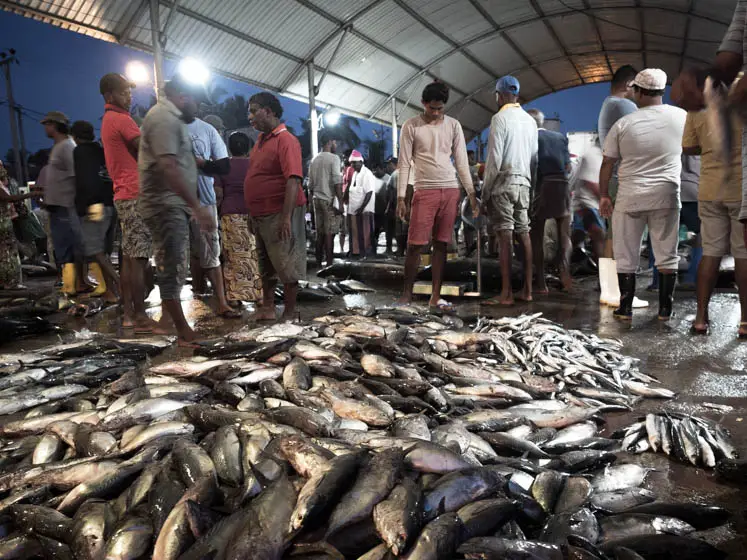
These smaller fish are taken from the boats and placed wherever there is space on the dock where they will be sold in bulk.
Our first stop was the main dock, the area known as the Lellama, where there were about a dozen boats lined up. Here, the boat’s crew were steadily working to move the larger fish from the hull to the deck to the dock.
This was back breaking work.
The crew were using pulleys to bring the fish up to the deck, then they would carry the fish to the edge of the boat, and pass to two other men who then carry to their designated spot on the dock.
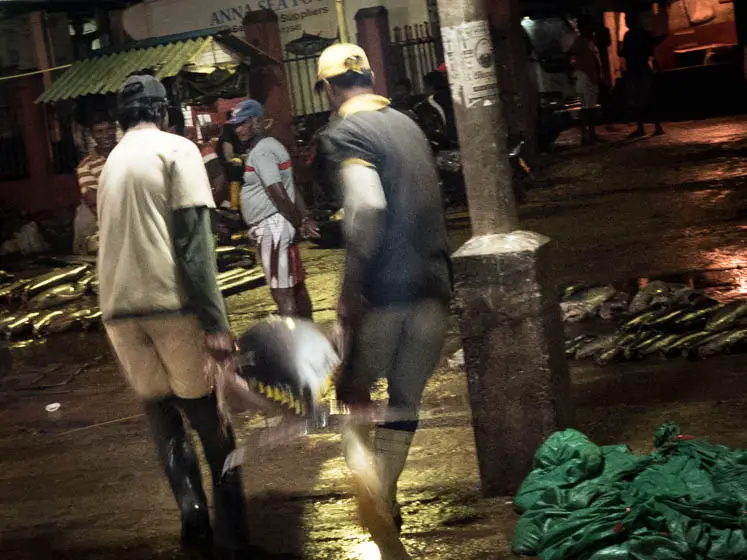
Carrying yellowfin tuna is back breaking work. They weigh up to 70 kgs and more and these workers will transport dozens of these heavy fish every night.
Despite the size and weight of the fish, they were working at a frenetic pace. But they have to, given time is of the essence at this time of night
We did pretty well to stay out of the way, unlike when we visited Ho Chi Minh City’s wholesale seafood market.
The prized catch of the day was yellow fin tuna. Every boat seemed to be offloading these majestic creatures. To witness so many of these up so close was quite the treat.
The process for selling these impressive looking fish is fairly straight forward. The tuna is carried off the boat, taken to a large set of scales, weighed, and then the auction process begins. Once the tuna is sold, a small cut is made in the skin, and the fish removed in time for the next one.
There was one oddity that took some explaining from our driver. There was a large amount of sharks being offloaded from the boats and they were being unceremoniously dumped, including near the motorbike parking area, and well away from any auction action.
Turns out that most of these sharks had being transported here from southern Sri Lanka for the purpose of making Karawala, which is a Sri Lankan dried fish product used in curries or cooked by itself as a stir fry or side dish.
As a glimmer of light started showing on the horizon, we made our way across the road where the retail fish market was in full swing.
The most impressive sight was a fishmonger cutting up fillets of tuna on a brightly lit red coloured table. He was doing a brisk trade, and his knife work was mesmerising to watch.
We wandered the rest of the market for a short where we saw the usual variety of seafood for sale.
By now the sun had started to rise, and the rest of Negombo was beginning another day. We met up with our driver and made our way back to our hotel happy that not only had we witnessed another great seafood market, we had added to the list of great places we’d seen on our Sri Lankan trip, and had also experienced the legend of the Lellama.
Did you enjoy this story of this Sri Lankan market? I write a lot about markets so if you’re interested in reading more, sign up to my newsletter so you never miss out on an update.

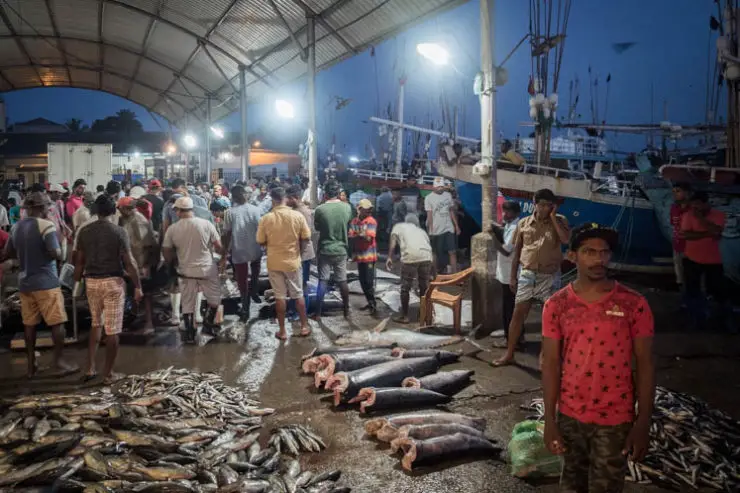
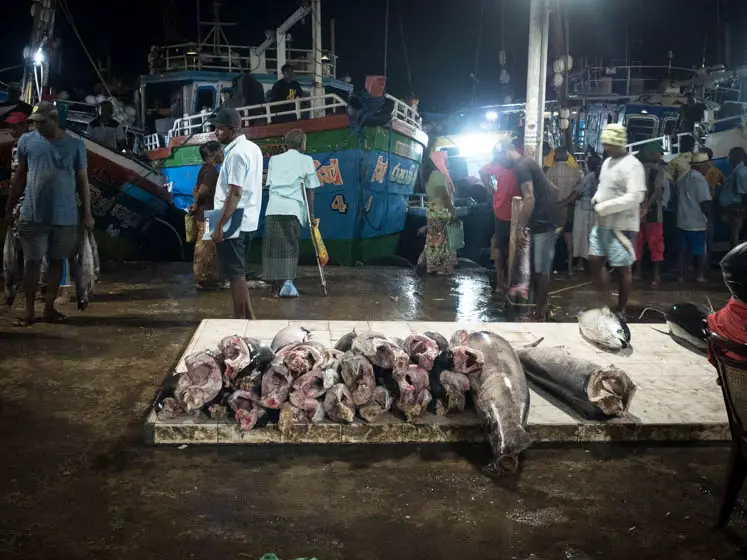
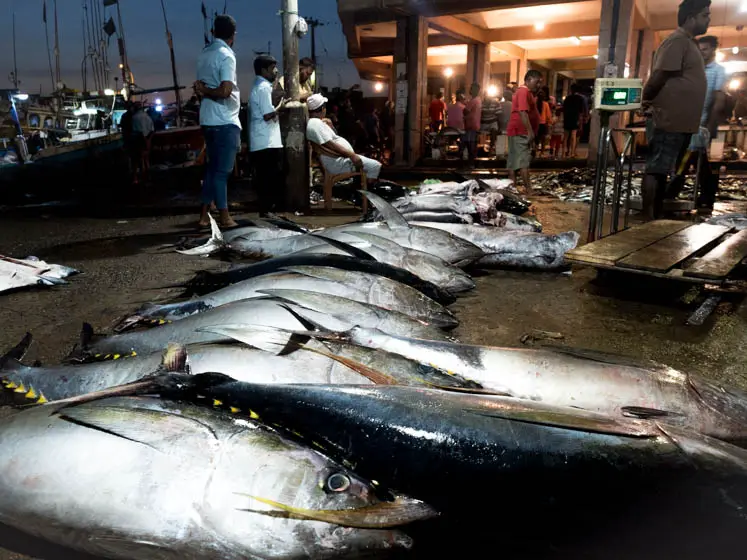
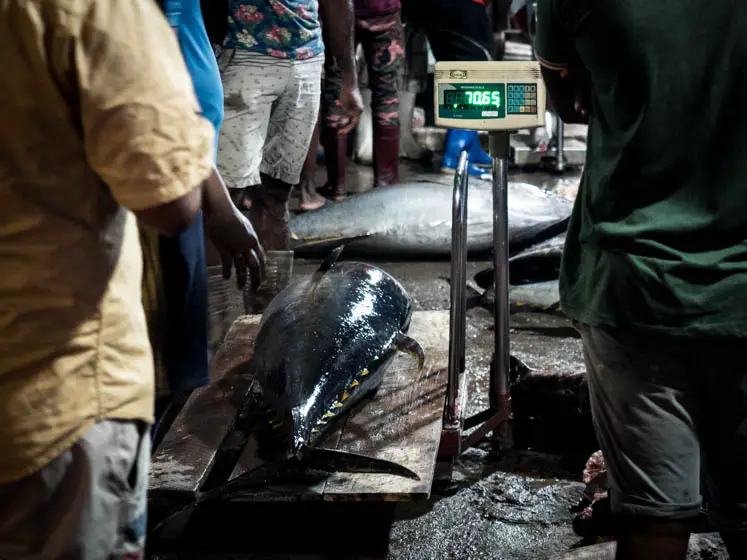
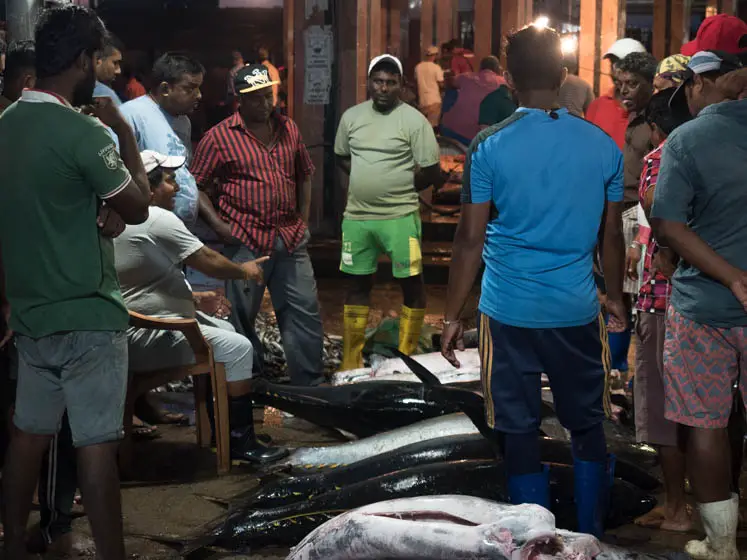
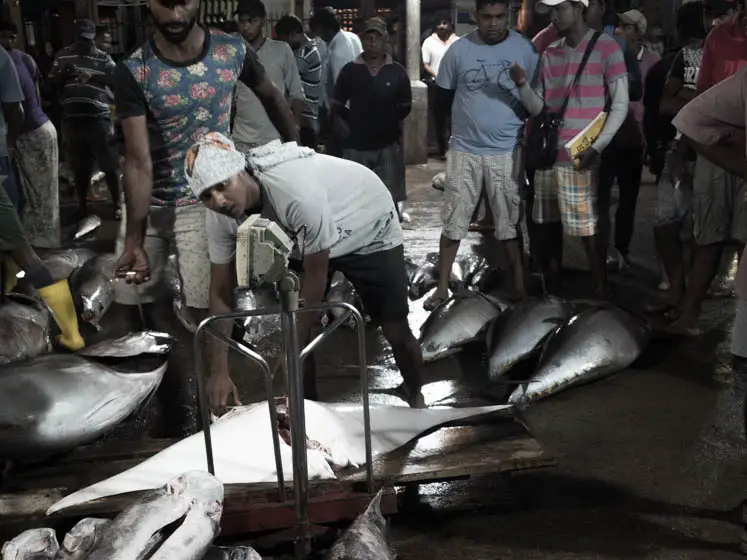
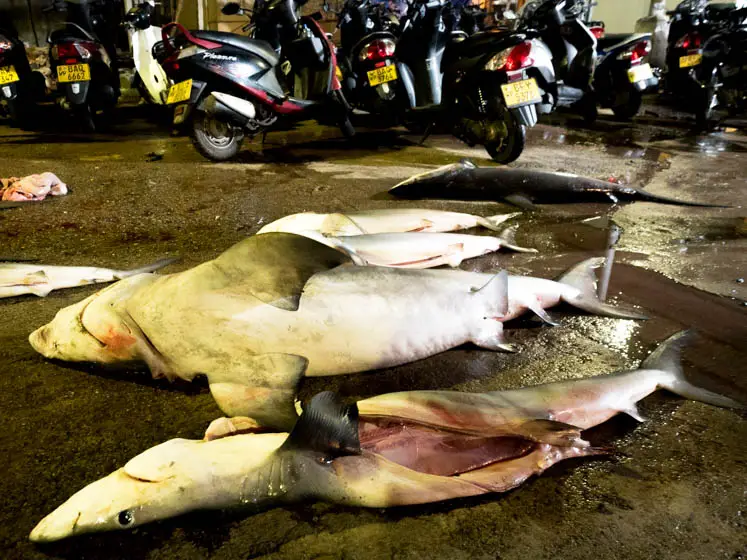
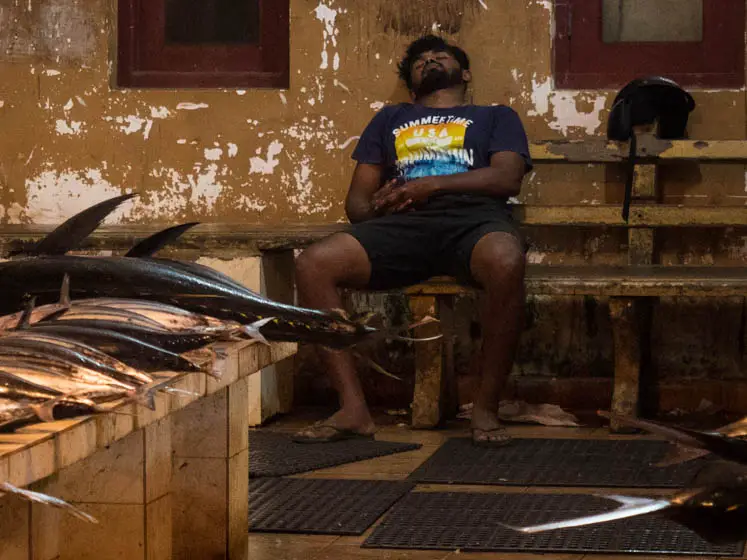
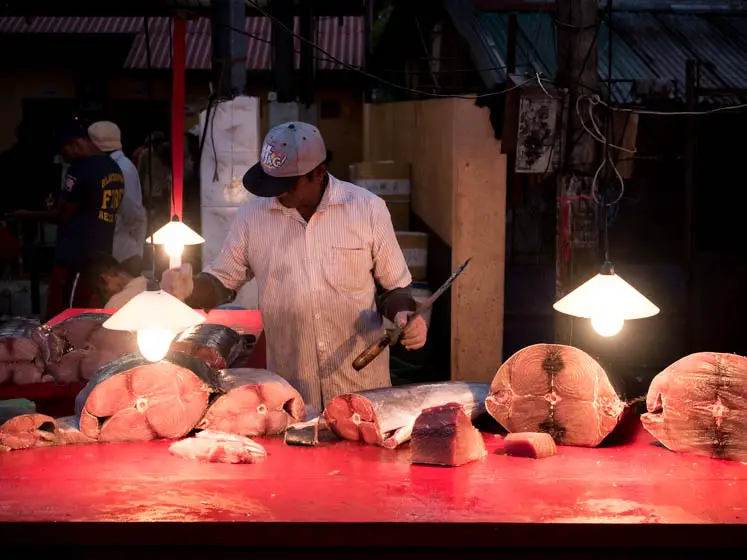
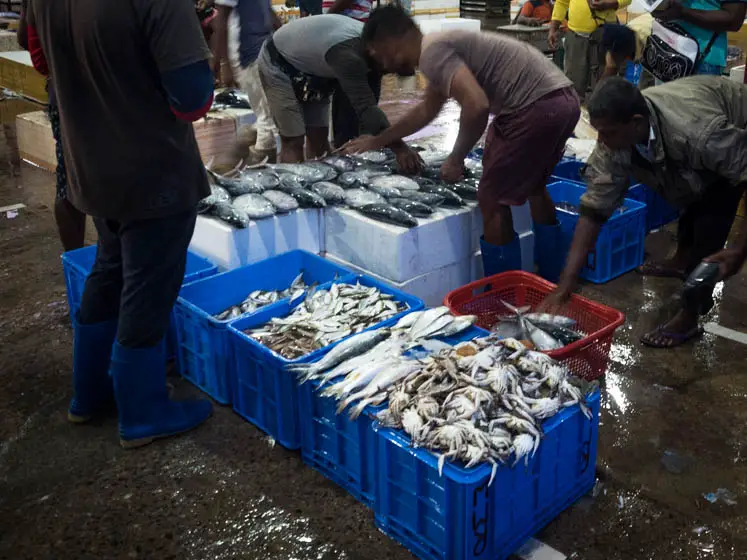
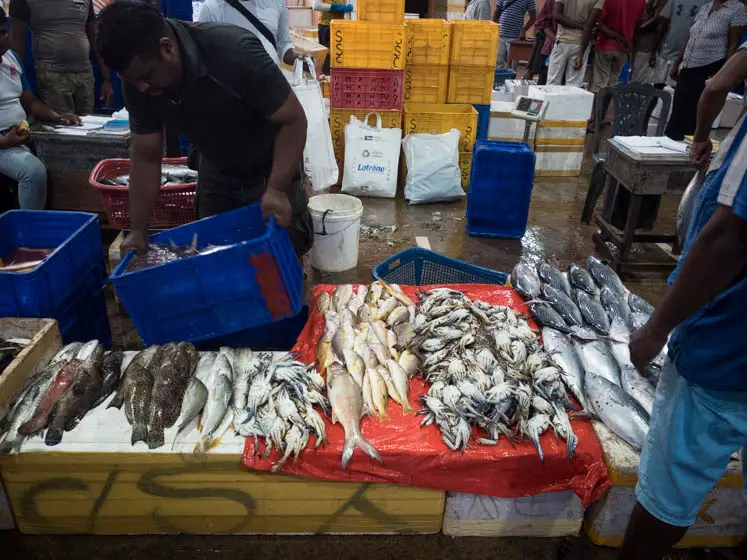
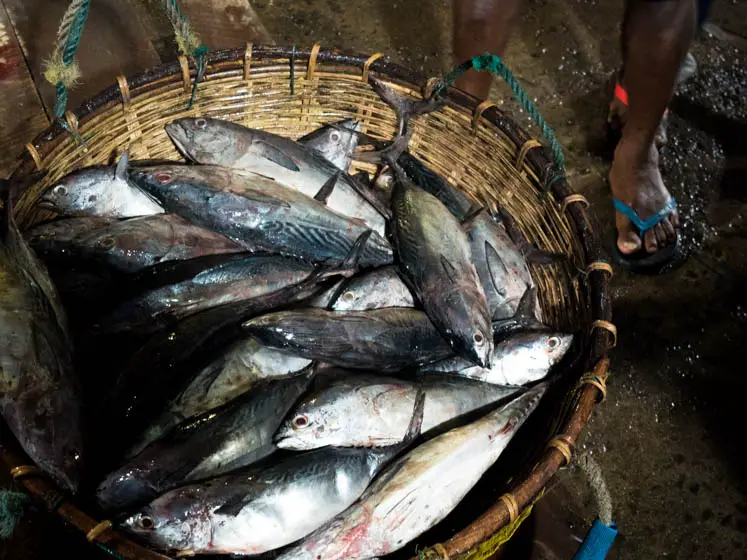
Hi Markus,
Being a resident of Negombo, I really enjoyed this blog. It was detailed and descriptive of a true experience of the Negombo lellama.